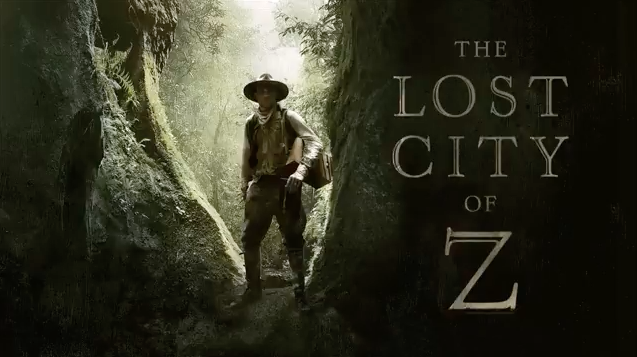The Lost City Of Z Reviews

The Lost City of Z is a handsome and ambitious historical epic, if also one that's more intellectually engaging than emotionally compelling. In the year 1905, Percy Fawcett (Charlie Hunnam) is a member of the British military who seeks to gain decorations and improve his own standing, as part of a larger effort to repair his legacy after his father ran the family name into the ground.
There is a feral beauty to the exotic locations the British Empire wandered into during the height of its 19th century supremacy. Supposedly bathed in untouched green, and as menacingly inviting as the serpentine Amazon River itself, the Great White explorer’s life was meant to be one of tranquil blue sheens that hid carnivorous fish beneath its gloss—and perhaps a “lost” civilization or two in its jungled depths.Such gross simplifications of faraway lands, which feature heavily in certain characters’ psychology during The Lost City of Z, is the stuff adventure yarns and imperial conquest are built on. This lifestyle has also been thoroughly explored in a number of iconic stories, from literature to cinema, and from Kipling to Herzog. Yet, one of the great strengths of James Gray’s The Lost City of Z film adaptation is that he cuts through that romance and uses it as a mirror for Western culture and the men who spread it. This is not simply a post-colonial condemnation of the past, but a triumphant and shrewdly intelligent modernization of the classic epics of yore. It also is the best narrative film to play at this year’s New York Film Festival.As a movie, Z pinpoints the exact generational shift whereupon Victorian superiority descended into post-war waywardness. The exploits of this culture, which are often imagined as an escape into the purity of nature, instead become an extension of the very souls and obsessions that wished to vanish there in the first place.
The main spirit of the piece is Percy Fawcett, played here with a deliberately antiquated affectation by a superb Charlie Hunnam. Fawcett is the last guard of old Victoria’s classic English gentry. Alas then that when the film opens, it’s already 1905, with the queen long dead and Fawcett appearing as a man out of time.
Despite wishing to rise in English society, he unfortunately suffers, as one of his aristocratic superiors notes, from “a poor choice in ancestors.” Presumably driven to excel to even greater heights due to his father’s own shortcomings, Percy has served with ambition in both North Africa and Asia, but by the time the film begins with him in Ireland, it is clear he’ll never be allowed into the military’s “inner circle.”. At least that is until he is given an offer by the Royal Geographical Society to survey Bolivia, which remains one of the last frontiers of mysterious jungles and dangerous “savages.” It also allows him a chance to cool local tensions and potentially prevent another war for the homeland. So despite his beloved wife Nina (Sienna Miller) being pregnant with their second son, Fawcett departs and finds himself on the road to fame and success. For beyond tracing the source of the Rio Verde River, he also survives attacks from local natives and run-ins with piranhas.
He even finds pottery and carvings in the deepest jungles, suggesting that, just maybe, a fabled lost city of gold really did exist beyond the reach of white men.Fawcett is most remembered in history for his final trek to the Amazon in 1925 with his adult son Jack (Tom Holland), and how his adventures inspired Sir Arthur Conan Doyle to write The Lost World. But the film’s strength is much more on how each venture to South America—and the Great War that interrupted those journeys—affected Fawcett’s constantly thwarted ambition, his relationship with Nina who he considered his equal (but “only of the mind”), and how the world he knew was just as lost as any ancient city by the end of World War I. Still, the pull of Fawcett’s mysterious “Z” city (“El Dorado” had too many negative connotations by the 20th century) remained inescapable.Obviously, any film that deals with vanishing into South American jungles will be instantly compared to the Herzog classic where vainglorious conquistadors got lost in the woods.
However, Gray’s film owes less to that than the sprawling and gingerly paced epics of about 50 or 60 years ago. Rather than tell just of one (or several) disappearances into the Amazon’s heat, The Lost City of Z is more of a traditional panorama that evokes life from a bygone age with sprawling storytelling.
And the modernization of the material is that rather than becoming engrossed in Percy’s fascination—as how a David Lean protagonist might “go native”—Percy is ostensibly a product of turn-of-the-century English yearning and etiquette, with much of the film’s strongest elements being of that intimate portraiture at home.Beautifully lensed by Darius Khondji in on 35mm celluloid, Fawcett’s England is one of smoke-adorned mahogany in dark corners and picturesque afternoons in the meadow. However, the sun is already setting on this world, even before the film travels to the grim WWI battlefields. Within this transition, the need for English explorers and adventurers already appears to be dying with every passing day, leading to a sophisticated, if mostly implied, relationship between the central husband and wife.Sienna Miller, who is starting to make a career out of playing the dutiful and long suffering bride, gets her best role in that mold yet since Nina is very much an active part of the story, enjoying a life beyond asking for her husband to come home.
In fact, they are both suffragists who behoove the rigidness of the culture they inhabit. Nevertheless, the film implies an implicit waffling from Percy, who speaks of modernization but finds himself lost in ever the ancient daydreams of golden cities, and classical British fantasies like climbing the nigh insurmountable class system. He likewise speaks about wishing to free the “Indians” of South America from slavery, but still seems to use them as merely a rationalization for his own passion of returning again and again to the jungle. Still, The Lost City of Z is a tremendous achievement for Gray, his cast, and an elusive ambition that is hardly exclusive for the film’s protagonist. This picture is a trip into the past, both in terms of setting and in its determination to revisit a kind of grandiose storytelling that used to be the province of studios who now would never touch the stuff unless there could be some superpowers thrown in.
Z is an unabashed throwback that revisits a lost form with a modern sensibility—discovering its great prize for the more adventurous of moviegoers.
